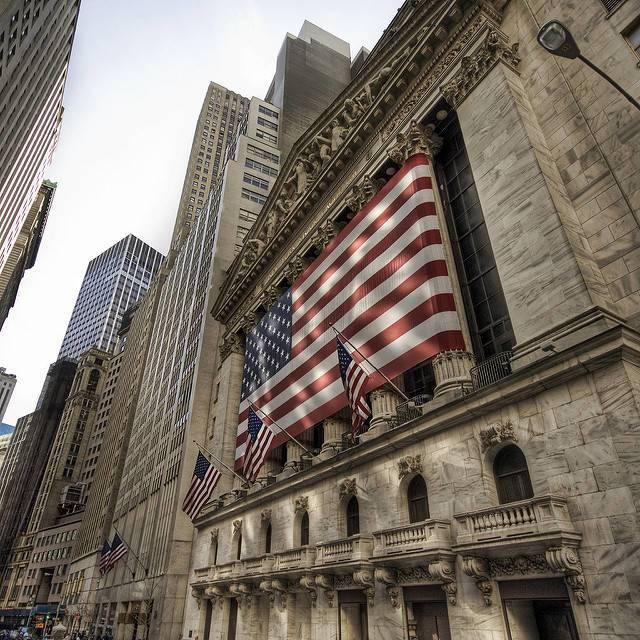
So-called “shadow banks” have edged out a larger portion of the U.S. financial sector, especially the mortgage market, over the past several years, according to a working paper released this month by economists from Columbia University, Stanford University and the University of Chicago.
Shadow banking includes a wide gamut of nonbank financial services that fall beyond the scope of traditional regulation, from hedge funds for the wealthy to payday lenders often accused of preying on the poor.
Investment banks, insurance companies, money market funds and private equity firms are also considered part of this booming segment of the financial industry. So are financial technology firms such as Quicken Loans which, depending on the source cited, is the second or third largest mortgage lender in the U.S.
Estimates of these nonbank financial institutions' cumulative size are all over the map, from $25 trillion to $36 trillion in assets. Last year CNBC estimated that the shadow banking system had grown by 25 percent since the 2008-2009 global financial crisis. This system of nonbank financial services is a global phenomenon, and institutions such as the International Monetary Fund describe it as a vehicle for growth while fraught with risks.
Shadow banks nearly tripled their share in the mortgage market from 2007 to 2015, according to the team of researchers from Columbia, Stanford and Chicago. And they warn this fast -- and largely unregulated -- growth could expose the financial sector to greater long-term risk.
Many of the customers to which these firms lend money are less creditworthy than the recipients of loans from conventional banks. The scenario is eerily similar to what happened a decade ago when sub-prime mortgage and refinancing schemes, along with the re-securitization of those loans, contributed to the falling dominoes that almost demolished the U.S. and global economies.
A cohort of these shadow financial institutions have entrenched themselves in the U.S. Federal Housing Administration mortgage market. This division of the U.S. Department of Housing and Urban Development lends to borrowers who are at more financial risk than the general U.S. population. Shadow banks increased their share of this market sevenfold between 2007 and 2015 and now controls all but 25 percent of it, according to the research team.
Not all analysts are spooked by shadow banks. The Economist, for example, touts these financial firms as creating a more viable option compared to conventional banks, which often charge more to process and issue loans. But in some nations where shadow banks thrive, such as China, their surge in popularity and their ability to sidestep the country’s banking regulations has placed the bond markets at risk.
China’s central bank recently compelled these financial institutions to set aside enough deposits in order to account for any losses from investment vehicles, such as wealth management products (WMPs), CNBC reported in January. The result was higher borrowing rates in recent weeks, which squeezed both shadow financial institutions and their customers who have come to rely on them for credit.
And in a speech last fall, Federal Reserve Bank Governor Daniel K. Tarullo said these shadow banks could put the U.S. economy at risk in the event investors rush to pull their money out of these companies at any early signs of financial trouble. Tarullo also reminded the audience at Columbia University that the collapse of shadow banking companies such as Lehman Brothers and American International Group, not just the likes of conventional banks Washington Mutual and Wachovia, helped demolish confidence within the U.S. banking sector in 2008.
It is doubtful that the concern over shadow banking’s growth and inherent risks will score the attention of the presidential administration. Donald Trump’s White House is determined to undermine or rescind the financial reforms implemented by his predecessor after the global economy's near collapse nine years ago, such as the Dodd-Frank Act.
But on Bloomberg, Leonid Bershidsky said that if traditional banks fade away, such an outcome could leave many consumers with limited, and far riskier, investment options. These shadow banks are conducting the same kind of business as conventional banks, Bershidsky argued, only without being subjected to the same rules.
“Governments, however, could level the playing field by deciding that any lender is a bank and imposing the same tough rules on all of them,” he wrote. “Regulatory arbitrage is inherently unfair, and it's unclear why firms that claim a technological advantage should be given additional preferences.”
Image credit: Trey Ratcliff/Flickr

Leon Kaye has written for 3p since 2010 and become executive editor in 2018. His previous work includes writing for the Guardian as well as other online and print publications. In addition, he's worked in sales executive roles within technology and financial research companies, as well as for a public relations firm, for which he consulted with one of the globe’s leading sustainability initiatives. Currently living in Central California, he’s traveled to 70-plus countries and has lived and worked in South Korea, the United Arab Emirates and Uruguay.
Leon’s an alum of Fresno State, the University of Maryland, Baltimore County and the University of Southern California's Marshall Business School. He enjoys traveling abroad as well as exploring California’s Central Coast and the Sierra Nevadas.














